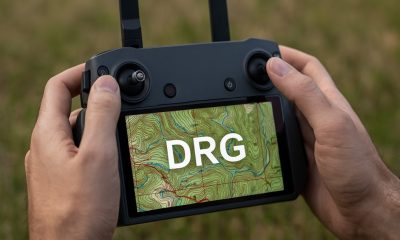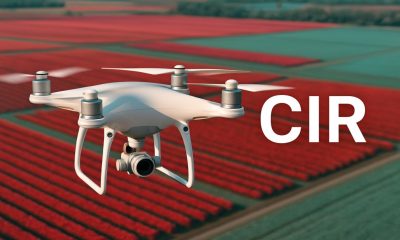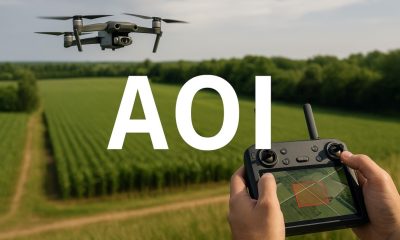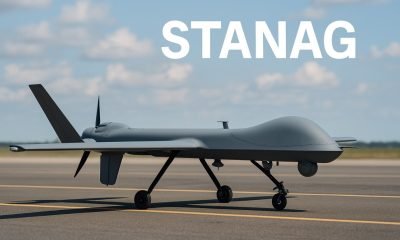Mexican Drone Regulations
Drone Safety Requirements in Mexico
Published
8 months agoon
Table Of Contents

Drone Safety Requirements in Mexico- What Are They?
The Drone Safety Requirements in Mexico are designed to ensure that all drone operators—whether recreational, commercial, or governmental—maintain a high standard of safety during their operations. These requirements vary based on the type of license held by the operator, reflecting the different levels of risk and responsibility associated with each type of use. Below, we outline specific safety requirements for recreational, commercial, and governmental operators to ensure compliance with the guidelines set by the Agencia Federal de Aviación Civil (AFAC).
1. Safety Requirements for Recreational Drone Operators
Recreational drone operators must follow fundamental safety practices to prevent accidents and maintain a secure flying environment
- Pre-Flight Checks: Before every flight, recreational operators should inspect their drones to ensure all parts, such as propellers and batteries, are functioning properly
- Battery Management: Drones should only be flown with fully charged batteries to avoid power loss mid-flight
- Weather Awareness: Recreational operators should check weather conditions, avoiding flights in adverse conditions like high winds, rain, or fog
- Respect for Personal Space and Privacy: Recreational operators should avoid flying near people, animals, or over private property to prevent disturbances or privacy issues
- Emergency Procedures: Familiarity with the drone’s emergency functions, like Return-to-Home (RTH), is essential for dealing with signal loss or unexpected issues
Example of Compliance: A recreational operator plans to fly their drone in a park, checks the weather forecast, ensures the drone’s battery is fully charged, and avoids flying near crowds or sensitive areas
2. Safety Requirements for Commercial Drone Operators
Due to the professional nature of their activities, commercial operators are required to follow more stringent safety protocols. These guidelines ensure that commercial flights are conducted responsibly, especially in urban or populated areas
- Mandatory Pre-Flight Inspection: Commercial operators must perform a thorough pre-flight inspection, checking batteries, sensors, and all moving parts
- Flight Logs: Commercial operators are required to maintain a detailed flight log for every operation, noting factors like flight duration, location, weather conditions, and any incidents
- Emergency Procedures and Safety Protocols: Commercial operators must have documented emergency protocols, including procedures for signal loss, low battery, and manual override
- Safety Gear: Operators should use appropriate safety gear, such as high-visibility vests, if operating in public or construction areas
- Obstacle Avoidance Technology: Drones used commercially should be equipped with obstacle avoidance sensors to reduce the risk of collisions, particularly in complex environments
Example of Compliance: A commercial drone pilot performing aerial photography for a real estate project checks the drone’s sensors, logs the flight in a digital record, and ensures the location is free of unauthorized individuals before beginning the operation
3. Safety Requirements for Governmental and Emergency Drone Operators
Governmental and emergency drone operations often occur in challenging conditions and critical situations. These operators must meet advanced safety requirements to ensure the success of missions while safeguarding public safety
- Advanced Pre-Flight and Post-Flight Inspections: Governmental operators are required to conduct detailed inspections before and after each flight, covering all critical components, including advanced sensors, cameras, and backup systems
- Emergency and BVLOS Protocols: Due to the high-risk nature of their missions, governmental operators must have comprehensive emergency protocols, particularly for Beyond Visual Line of Sight (BVLOS) flights, which often include pre-set safe landing zones and alternative flight paths
- Coordination with Ground Teams: For emergency operations, drone pilots must coordinate with ground personnel to maintain communication and synchronize efforts
- Advanced Navigation and Safety Features: Governmental drones are often equipped with advanced features like geofencing, detect-and-avoid systems, and thermal imaging for complex missions
- Specialized Safety Training: Governmental operators undergo specialized training in emergency response, including nighttime and BVLOS operations, and are certified in managing high-stakes scenarios
Example of Compliance: During a disaster relief mission, a governmental operator flies a drone equipped with thermal cameras for locating individuals. They conduct pre- and post-flight inspections, maintain communication with on-site rescue teams, and adhere to established BVLOS protocols
Frequently Asked Questions (FAQs)
- Are recreational operators required to log their flights?
- No, recreational operators are not required to maintain flight logs, though it’s recommended for tracking purposes
- What safety gear is required for commercial operators?
- Commercial operators should use safety gear like high-visibility vests if flying in public or industrial areas, particularly where bystanders may be present
- Do governmental drones need special authorization for BVLOS flights?
- Yes, governmental operators require AFAC authorization for BVLOS operations, particularly in emergency response situations
- What happens if a drone loses signal during a commercial operation?
- Commercial drones equipped with RTH functionality will automatically return to a designated location, while operators should follow documented protocols for signal loss
- Are obstacle avoidance systems mandatory for recreational drones?
- No, obstacle avoidance is not required for recreational drones, but it is encouraged for safety
Summary
Following the Drone Safety Requirements in Mexico is essential for safe, compliant operations across all categories. Whether flying recreationally, commercially, or in a governmental capacity, adherence to these guidelines ensures both operator and public safety
To Learn more about acronyms used in this article visit our Drones Acronym Page.











